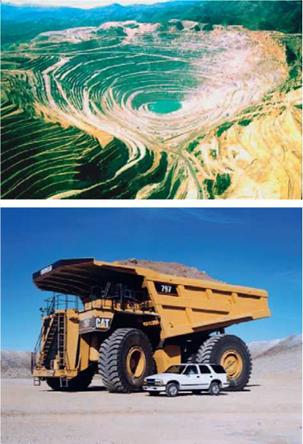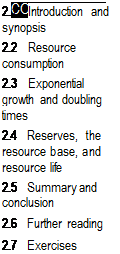E.1.1. Use Google to research the history and uses of one of the following materials:
■ Tin
■ Glass
■ Cement
■ Bakelite
■ Titanium
■ Carbon fiber
|
|
|
|
Present the result as a short report of about 100-200 words (roughly half a page). Imagine that you are preparing it for schoolchildren. Who used the material first? Why? What is exciting about the material? Do we now depend on it, or could we, with no loss of engineering performance or great increase in cost, live without it?
E.1.2. There is international agreement that it is desirable (essential, in the view of some) to reduce global energy consumption. Producing materials from ores and feedstocks requires energy (its "embodied energy"). The following table lists the energy per kg and the annual consumption of five materials of engineering. If consumption of each material could be reduced by 10%, which material offers the greatest global energy saving? Which the least?
|
Material |
Embodied energy MJ/kg |
Annual global consumption (tonnes/year) |
|
Steels |
29 |
1.1 X 109 |
|
Aluminum alloys |
200 |
3.2 X 107 |
|
Polyethylene |
80 |
6.8 X 107 |
|
Concrete |
1.2 |
1.5 X 1010 |
|
Device-grade silicon |
Approximately 2000 |
5 X 103 |
E.1.3. The ultimate limits of most resources are difficult to assess precisely, although estimates can be made. One resource, however, has a well-defined limit: that of usable land. The surface area of Earth is 511 million square km, or 5.11 X 1010 hectares (a hectare is 0.01 sq. km). Only a fraction of this is land, and only part of that land, is useful; the best estimate is that 1.1 X 1010 hectares of Earth’s surface is biologically productive. Industrial countries require 6+ hectares of biologically productive land per head of population to support current levels of consumption. The current (2008) global population is close to 6.7 billion (6.7 X 109). What conclusions can you draw from these facts?
This page intentionally left blank
2.1 
 |
 |
Introduction and synopsis
You can’t understand or reach robust conclusions about human influence on the environment without a feel for the quantities involved. This chapter
The Bingham Canyon copper mine in Utah, now 1.2km deep and 4 km across, and a Caterpiller truck that is part of the excavation equipment. (Images courtesy of Kennecott Utah Copper.)
is about their orders of magnitude. As we saw in Chapter 1, manufacturing today is addictively dependent on continuous flows of materials and energy. How big are these? A static picture—that of the values today—is a starting point, and the quantities are enormous. And of course they are not static. Growth is the life’s blood of today’s consumer-driven economies. An economy that is not growing is stagnant, sick (words used by economics correspondents for The Times). Business enterprises, too, seem to need to grow to survive. And all this growth causes the consumption of materials and energy to rise, or at least it has done so until now. Growth can be linear, increasing at a constant rate. It can be exponential, increasing at a rate proportional to its current size. And as we saw in Chapter 1, it can sometimes increase even faster than that.
Exponential growth plays nasty tricks. Something cute and cuddly, growing exponentially, gradually evolves into an oppressive monster. Exponential growth is characterized by a doubling time: anything growing in this way doubles its size at regular, equal intervals. Money invested in fixed-rate bonds has a doubling time, though it is usually a long one. The consumption of natural resources—minerals, energy, water—grows in a roughly exponential way: they, too, have doubling times, and some of these are short. Certain resources are so abundant that there is no concern that we are using them faster and faster; the resources from which aluminum, calcium, chlorine, hydrogen, iron, magnesium, nitrogen, oxygen, potassium, silicon, sodium, and sulfur are drawn are examples. But others are not; their ores are localized and the amount economically available is limited. Then the doubling-up nature of exponential growth becomes a concern: consumption cannot continue to double forever. And extracting and processing any material, whether plentiful or scarce, uses energy—lots of energy—and it too is a resource under duress.
This situation sounds alarming, and many alarming statements have been made about it. But consider this: the exhaustion time for reserves of the ores of copper, in 1930, was estimated to be 30 years; today (2008) the exhaustion time of copper reserves is calculated as… 30 years. There is obviously something going on here besides exponential growth. This chapter explores it.



